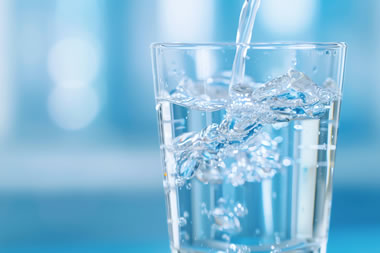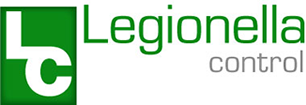What is Backflow and How Can it Adversely Affect Water Quality?
 In this article our Legionella and water safety experts look at plumbing backflow and how it can adversely impact water quality and the safety of water supplies.
In this article our Legionella and water safety experts look at plumbing backflow and how it can adversely impact water quality and the safety of water supplies.
The article explains what water system backflow is and how it occurs. It highlights examples and considers why preventing it in plumbing systems is important to maintain good water quality. It looks at the UK regulations that cover the installation of water fittings and concludes by highlighting things you can do to prevent backflow occurring.
A version of this story about backflow prevention in plumbing systems first appeared in Legionella Control International’s newsletter. To get it in your inbox, sign up here.
The importance of maintaining good water quality
Every day, millions of people turn on taps, showers, and other water sources without a second thought. We count on that water supply to be safe, and water companies take numerous steps to ensure this is always the case.
Of course, things can go wrong in many ways, although thankfully such cases are rare. One example of a potential issue that can affect water quality is backflow, and that’s what we’ll cover in this article.
What is backflow in a water system and what does it do?
Backflow in a water system occurs when the flow of water changes direction, reversing to travel in the opposite way to the usual flow. This can lead to contaminated water entering clean water supply pipes and becoming available for use when this obviously should not be the case.
A change in water pressure can cause this to occur. Water systems are intended to provide clean, safe water for everyone to use. If backflow occurs, the water ends up flowing back into the public mains supply, or the buildings water systems. While it may simply lead to clean water going back into the system it came from, this is not always the case. Indeed, there have been instances where it has caused great disruption to water services in a wider area.
Whenever an occurrence of backflow happens, the water company will be alerted to it and must resolve the issue as quickly as possible. In the meantime, people living and working in the affected area will likely be unable to use the water supply provided to their homes and businesses.
The process for resolving such a situation is to flush through the water mains in the affected areas. This can take days depending on the contaminant. In the case of an insecticide entering the water system, excessively high levels of the insecticide remained in the pipework almost a week following the incident, despite flushing through the water mains.

What is an example of a backflow and how did it affect water quality?
Several examples of unwanted backflow have occurred over the years, involving contaminated ground water, nematodes, and even insecticides flowing back into the public water system. The public water supply is of course regularly inspected, with many water quality tests being carried out each year to ensure it is safe to drink. It is treated before reaching our taps.
However, things can go wrong. One striking example occurred in 1970 in Cincinnati, Ohio, USA. A worker had flushed out a wine distilling tank, but after completing the process, they accidentally left a water valve in the open position rather than closing it. This led wine from the next fermenting session to backflow into the public water system. Several nearby residents turned on their taps to find wine flowing from them… not the worst scenario you can imagine, I’m sure, but a quirkier example of how backflow can lead to a contaminated water supply. In the case of the nematodes and the insecticide, the outcome could have been far more serious.
In all cases, the backflow incidents required an interruption to the mains water supply while the necessary flushing and water testing procedures took place. An individual backflow incident can potentially interrupt the water supply for some time. At the very least, affected residents and businesses would be inconvenienced by this, if not placed in potential danger.
Why is backflow protection in a water system important?
While the wine backflow example is a more amusing incident, it should still never have occurred. Clearly, other backflow examples can be far more dangerous. If backflow protection is in place, all potential incidents like these can be prevented. Think of backflow protection as a plumbing barrier between the external water supply and the water system inside a building, whether that is a private property, a warehouse, a hospital, or another venue. It can also be used to protect parts of a building water system from the effects of backflow. It protects people from being affected by an incidence of backflow, since the water would not be able to flow back into the water system having been contaminated with for example, Legionella bacteria. In all the examples mentioned above, backflow preventers would have meant the incidents did not occur.
What are the regulations dealing with backflow prevention?
The Water Supply (Water Fittings) Regulations 1999 cover the installation of water fittings to ensure they are fit for purpose and protect against backflow. Schedule 2 covers the requirements for water fittings, noting that an ‘adequate device’ should be used for preventing backflow.
How to tackle backflow prevention in a building water system
Most businesses will have a Legionella Responsible Person or for larger businesses such as hospitals, councils, and universities they may have a Water Safety Group comprised of several individuals with experience of certain areas that are useful when maintaining a safe water system. Conducting a water safety or Legionella risk assessment of the entire water system forms the backbone of this process. It identifies all potential risks within the system and should therefore note the risks associated with possible backflow incidents as well.
The easiest way to prevent any backflow incidents in a building water system is by installing backflow prevention devices. These are specialist plumbing valves and devices available for use, depending on the scenario posed. A valve can be installed onto a pipe to ensure that the water can only flow in one direction. If working correctly, it cannot allow the water to backflow into other parts of the building water system or the public water supply.
When such devices are installed, they should form part of the regular inspection of the water system in the building. It’s wise to take note of the expected lifespan of any backflow preventers in use. Installation details should be kept for future reference. Regular inspection should confirm they are working and watch for any signs of wear that could indicate they need replacing.

Preventing backflow helps maintain safe, potable water quality standards
If a business allowed contaminated water to backflow into the public water supply, there would likely be fines involved once the problem has been resolved. As we have noted in the above examples, rectifying an incident of backflow can take many days and affect many people in the area who can no longer use their water supply.
Similarly, if vulnerable areas of a building water system are not fitted with backflow protection, water quality throughout the whole system could be put at risk of unnecessary contamination through backflow of, for example stagnant water containing high levels of Legionella or other waterborne bacteria.
Installing suitable backflow devices is by far the cheaper way to make sure backflow cannot occur – and to make sure your business and building users are protected from potential incidents that could be both costly and harmful. Complying with regulations regarding water quality, safe water supplies and health and safety issues is a necessary requirement.
World leading water safety specialists
The environmental safety specialists at Legionella Control International help business owners and landlords, facilities managers and those responsible for workplace safety maintain good water quality and mitigate risks associated with Legionella and other waterborne pathogens to maintain regulatory compliance and keep people safe.
If you would like to speak with one of our environmental safety specialists call us today on 0330 223 36 86 or contact us here …


